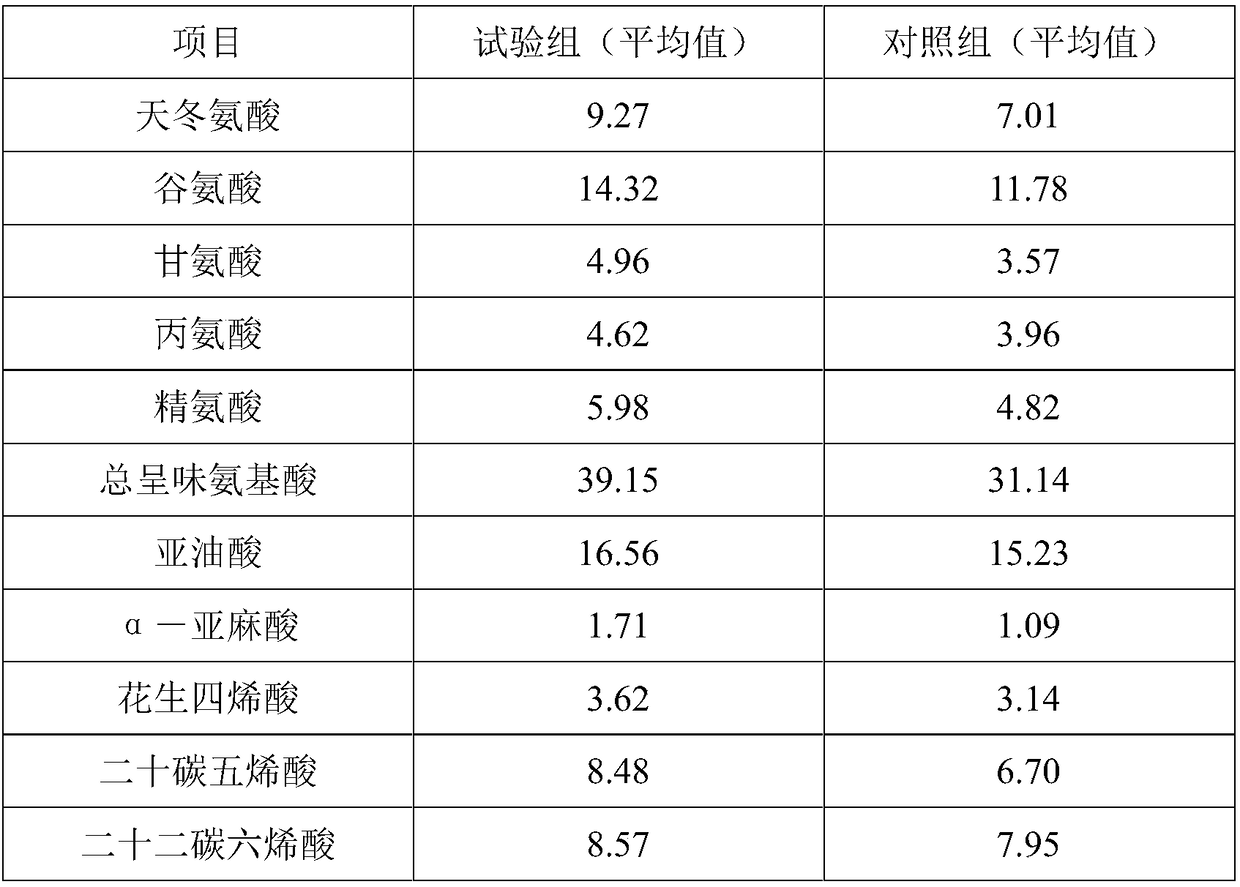Compound feed for river crabs
A technology of compound feed and mixed feed, which is applied in the direction of animal feed, animal feed, molding or processing of animal feed, etc. It can solve the problems of unfavorable digestion and absorption of river crabs, etc., and achieve the enhancement of body immunity, low production cost, and good palatability Effect
- Summary
- Abstract
- Description
- Claims
- Application Information
AI Technical Summary
Problems solved by technology
Method used
Image
Examples
Embodiment 1
[0047] The basic feed is composed of the following parts by weight: 8 parts of soybean meal, 5 parts of cottonseed meal, 12 parts of grass insect meal, 9 parts of spirulina powder, 13 parts of fish meal, 6 parts of alpha-starch, 2.5 parts of fish oil, 1.5 parts of perilla seed oil, 3 parts of sunflower oil, 4 parts of amino acid premix, 3 parts of vitamin premix, 10 parts of minerals, 0.5 parts of astaxanthin, 0.5 parts of beta-carotene, 1 part of beta-glucan, 1 part of lecithin , 0.3 part of choline chloride, 0.8 part of sodium dihydrogen phosphate, 0.5 part of table salt.
[0048] The high-protein additive is composed of the following parts by weight: 45 parts of grass insect powder, 40 parts of fish meal and 15 parts of spirulina powder.
[0049] High-fat additives include: 39 parts of fish oil, 20 parts of flaxseed oil, and 41 parts of sunflower oil.
[0050] How to prepare feed:
[0051] 1) pulverize the feed raw materials, mix them according to the principle of superpo...
Embodiment 2
[0065] Verification of Growth Performance Index of River Crab
[0066] Taking the feed pellets of the present invention prepared in Example 1 as the test group and the finished feed pellets prepared in Comparative Example 1 as the control group, the river crabs were randomly divided into 2 groups, two parallel groups in each group, and fed for 7 months. During the period from March to mid-June, the group mixed high-protein supplements and basic feed with a weight ratio of 1:9, and fed the crabs; from mid-June to August, they were fed the basic feed; after August, the crabs were given reproductive molting After shelling, the high-fat additive and basal feed were mixed with a weight ratio of 1:9, and the crabs were fed; the Chinese herbal supplements and the basal feed were mixed evenly, and the crabs were fed twice a month for three days each time; the control group During the entire breeding period, the control diet was fed, and the rest were the same.
[0067] After the test...
Embodiment 3
[0079] Content verification of flavor amino acids and unsaturated fatty acids in crab muscle
[0080] The feeding procedure was exactly the same as in Example 2. After the test, the contents of flavor amino acids and unsaturated fatty acids in the crab muscle were determined, and the results are shown in Table 2.
[0081] Amino acids were determined in accordance with GB / T5009.124-2003 by acid hydrolysis (tryptophan was hydrolyzed with NaOH); fatty acids were determined in accordance with GB / T17377-2008 by gas chromatography.
[0082] Table 2 Contents of flavor amino acids and unsaturated fatty acids in crab muscle
[0083]
[0084]
[0085] As can be seen from Table 2, the content of taste-flavored amino acids and unsaturated fatty acids in the crab muscle of the compound feed for feeding the test group are all greater than those of the control group, illustrating that the present embodiment compound feed significantly improves the taste-flavored carbamic acid content ...
PUM
 Login to View More
Login to View More Abstract
Description
Claims
Application Information
 Login to View More
Login to View More - R&D
- Intellectual Property
- Life Sciences
- Materials
- Tech Scout
- Unparalleled Data Quality
- Higher Quality Content
- 60% Fewer Hallucinations
Browse by: Latest US Patents, China's latest patents, Technical Efficacy Thesaurus, Application Domain, Technology Topic, Popular Technical Reports.
© 2025 PatSnap. All rights reserved.Legal|Privacy policy|Modern Slavery Act Transparency Statement|Sitemap|About US| Contact US: help@patsnap.com



